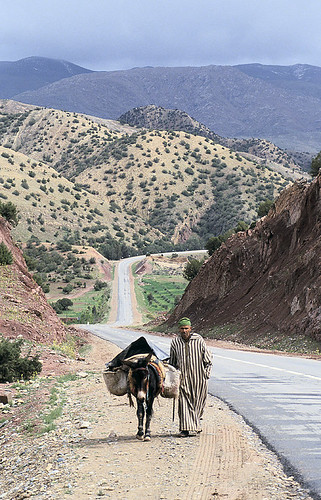Identifying best practices for climate adaptation indicators
Climate-Eval is about to embark on its fourth study, which will document good practices in indicators for evaluating climate change adaptation projects and programs.
Adaptation to climate change often involves programs and projects that try to minimize the impacts of climate stresses. Adaptation may take the form of livelihood security, disaster risk reduction or a combination of development objectives and adaptation measures. In developing countries funding for these types of projects mainly comes from financing institutions, and is implemented through governments and non-profit organizations. During the lifecycle of the project it is useful to know whether a project is on-track, and also whether its implementation was successful. This is done through monitoring and evaluation.
However, monitoring and evaluation is not easy at the best of times and proves particularly challenging when it comes to climate change interventions. This post will explore some of the reasons for this.
Evaluators encounter many conceptual and operational challenges, such as:

- long timescales associated with climate change, the difficulties with distinguishing the "noise" of natural climate variability from anthropogenic climate change, and the indirect impacts of climate-driven socio-economic change;
- moving baselines presented by climate change (evaluation against a backdrop of a changing norm);
- need for effective adaptation to safeguard against potential discontinuities and surprises resulting from climate variability, and the inherent uncertainty associated with climate projects;
- the mix of hazards and opportunities (e.g., taking advantage of opportunities such as longer growing seasons may increase exposure to hazards such as mid-season drought);
- the multi-sectoral nature of adaptation which means it involves many agencies and a large number of agencies and delivery partners at different scales (e.g., each may have different indicator requirements for their own M&E frameworks);
- inherent challenges of defining a long-term vision of the outcome of adaptation, since it constitutes the process of making adjustments to everything else (infrastructure, livelihoods, institutions, etc);
- absence of agreement over what constitutes success, coupled with the wide range of potential adaptation activities and a need for multi-stakeholder agreement on levels of acceptance of risk.
Furthermore, these difficulties apply at different stages and levels of intervention, i.e., finance/portfolio, national, project levels.
The Climate-Eval study will attempt to address these issues. One way by which it will do this will be by focusing on documenting the good practices in the development and identification of indicators to be used in M&E for adaptation interventions that are already out there. The study will also look at the definition of indicators in the context of climate change, the steps and elements which evaluators need to consider when formulating indicators, and possibly other tools to help assess preparedness and adaptability to climate change. The OECD DAC criteria of relevance, effectiveness, efficiency, impact and sustainability might also provide some guiding concepts when formulating and selecting indicators.
This is the second adaptation study focusing on climate adaptation, the first one being Tracking Progress for Effective Action: A Framework for Monitoring and Evaluating Adaptation to Climate Change conducted by Haris Sanahuja. Given the rise of adaptation projects and programs, and thus the subsequent increase in evaluations of those measures, the identification and analysis of appropriate indicators is deemed timely and appropriate.
Climate-Eval plans to carry out the study over the next months. As in previous studies that we have done in the past, we plan to engage with our members and will be soliciting your comments on the approach paper and draft version of the study using online consultation tools such as email and webinars.
We look forward to sharing the approach paper with you when it is ready and also receiving your input and comments in relation to the study.
Photo:Transporting goods. Morocco. World Bank



